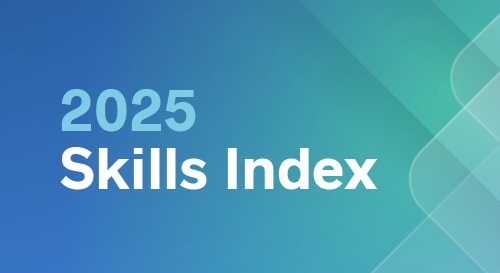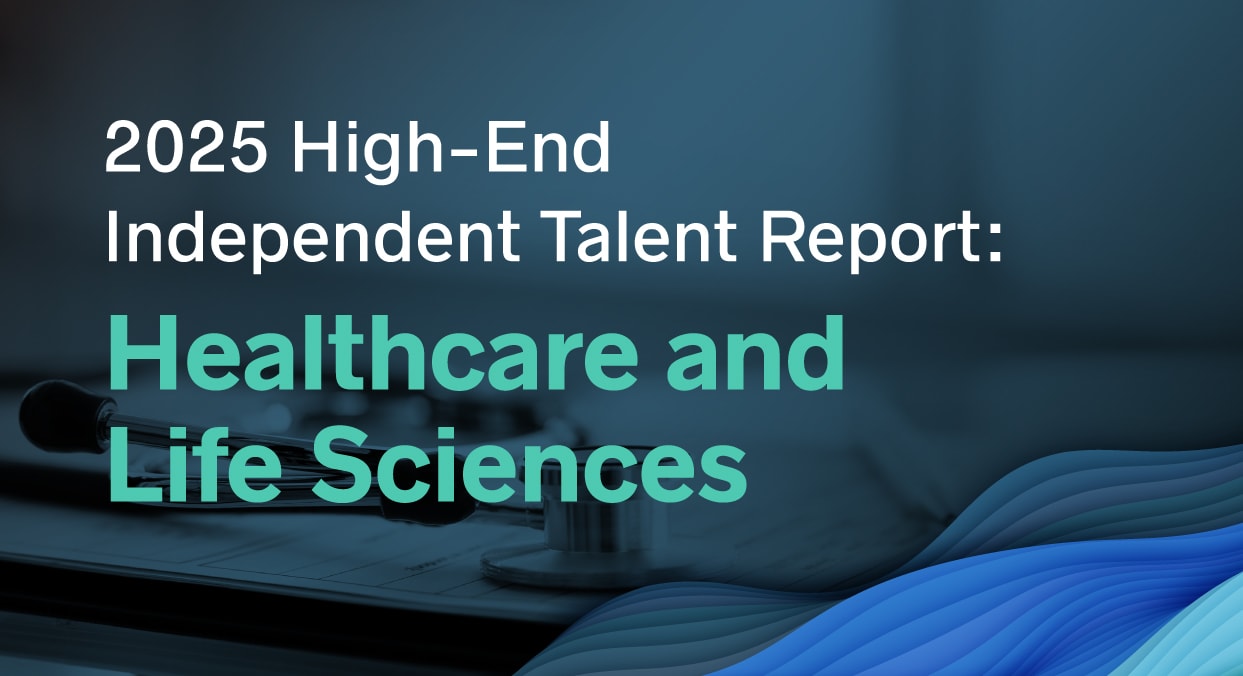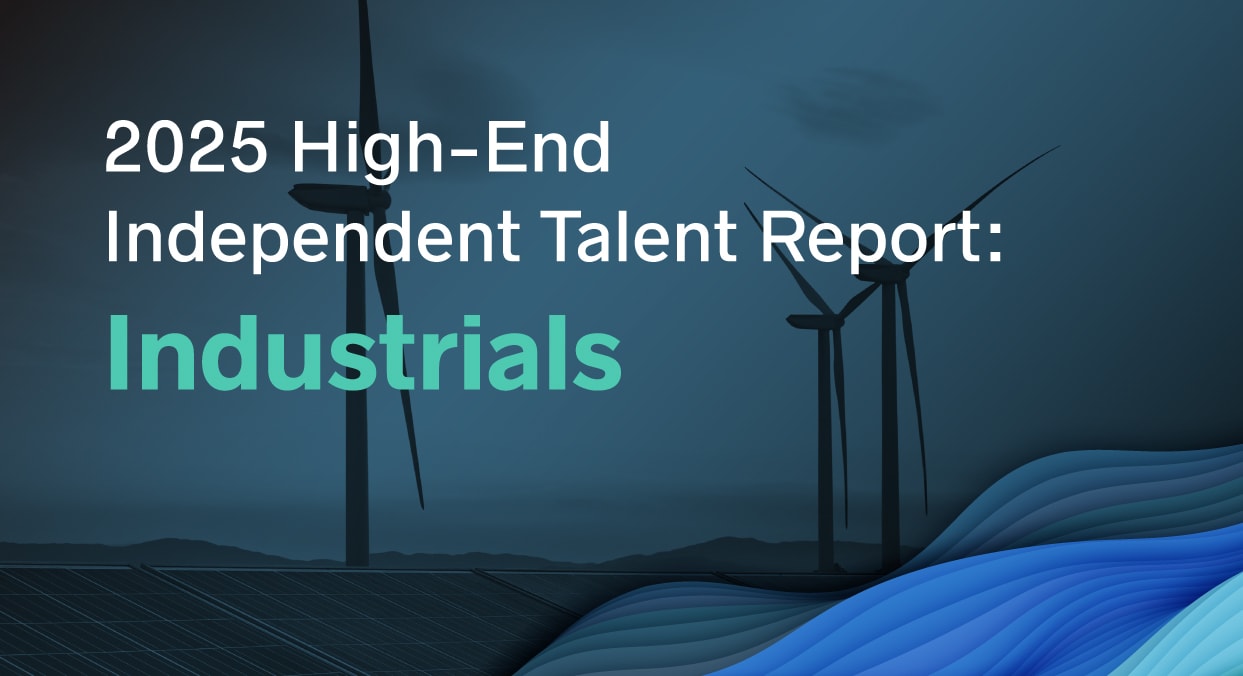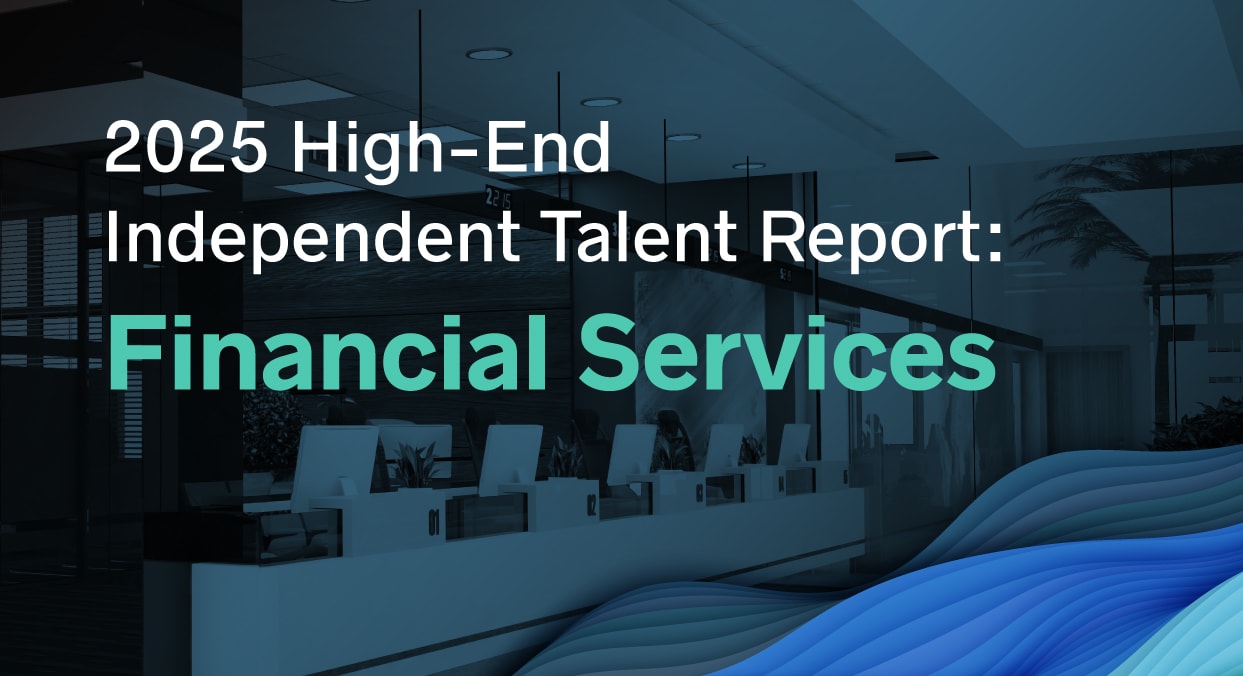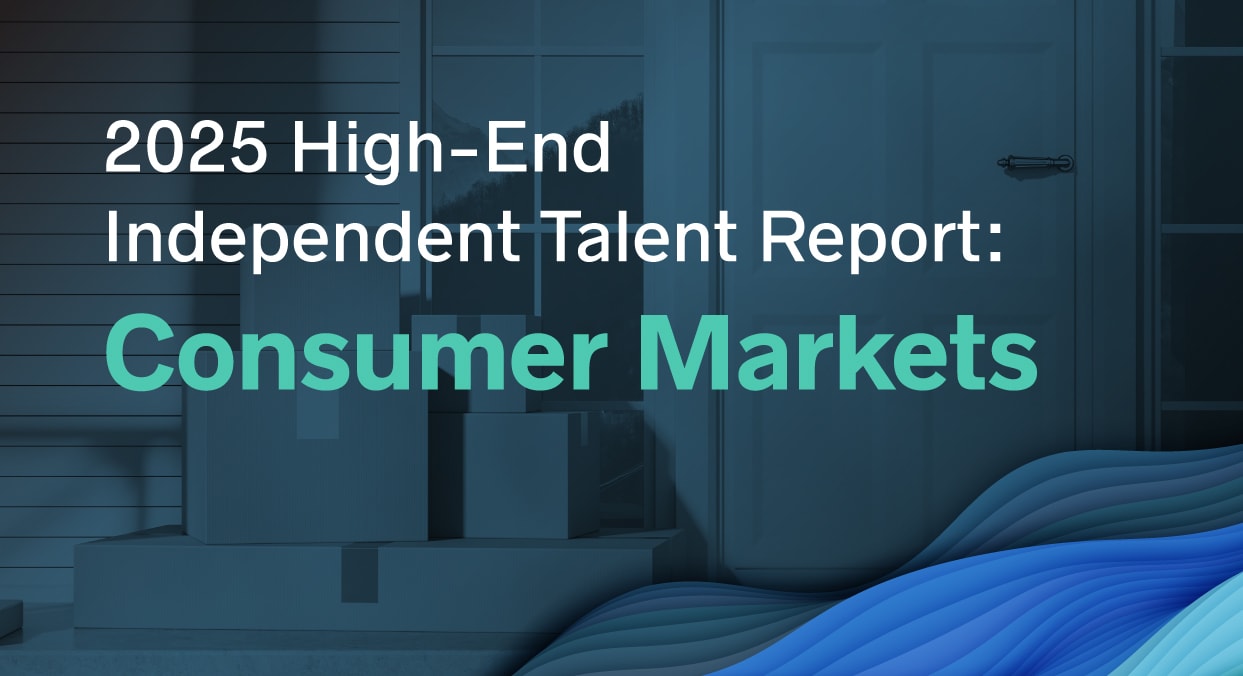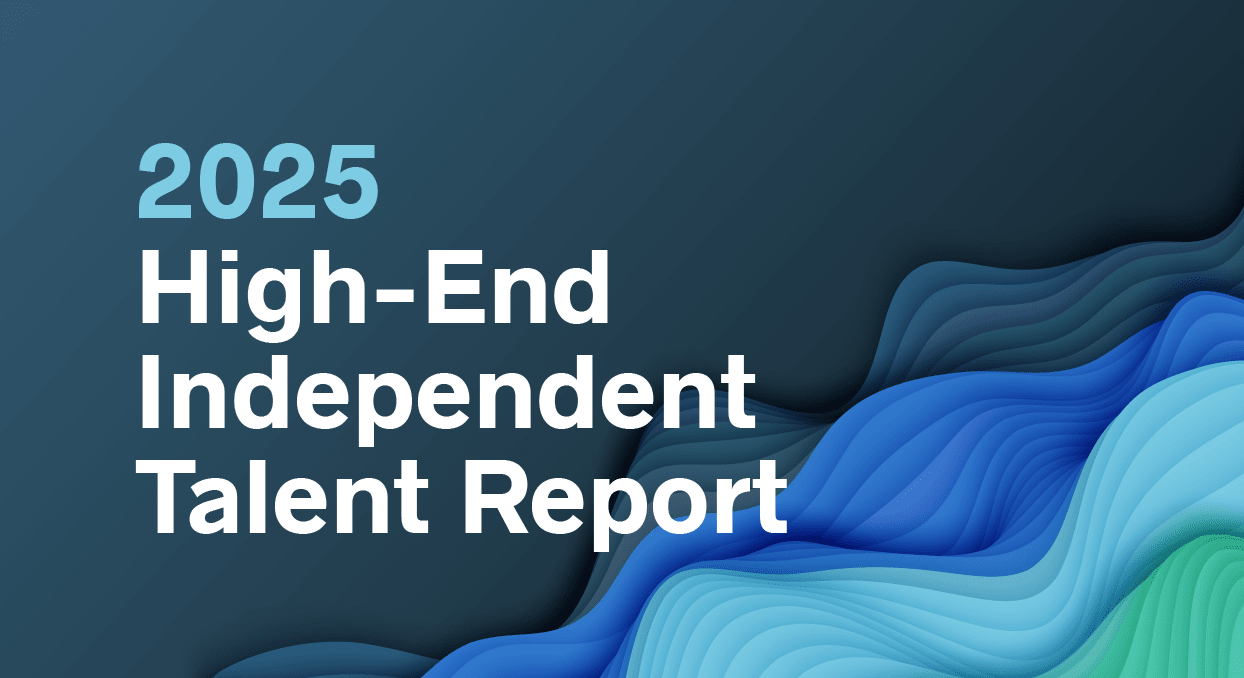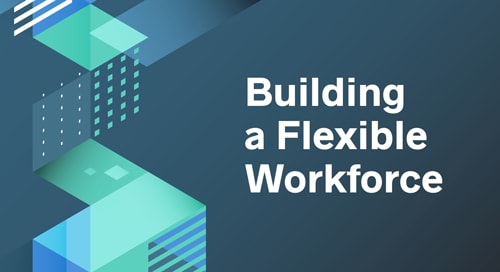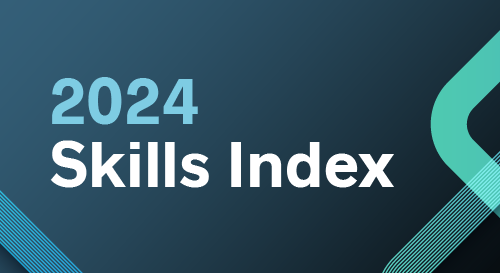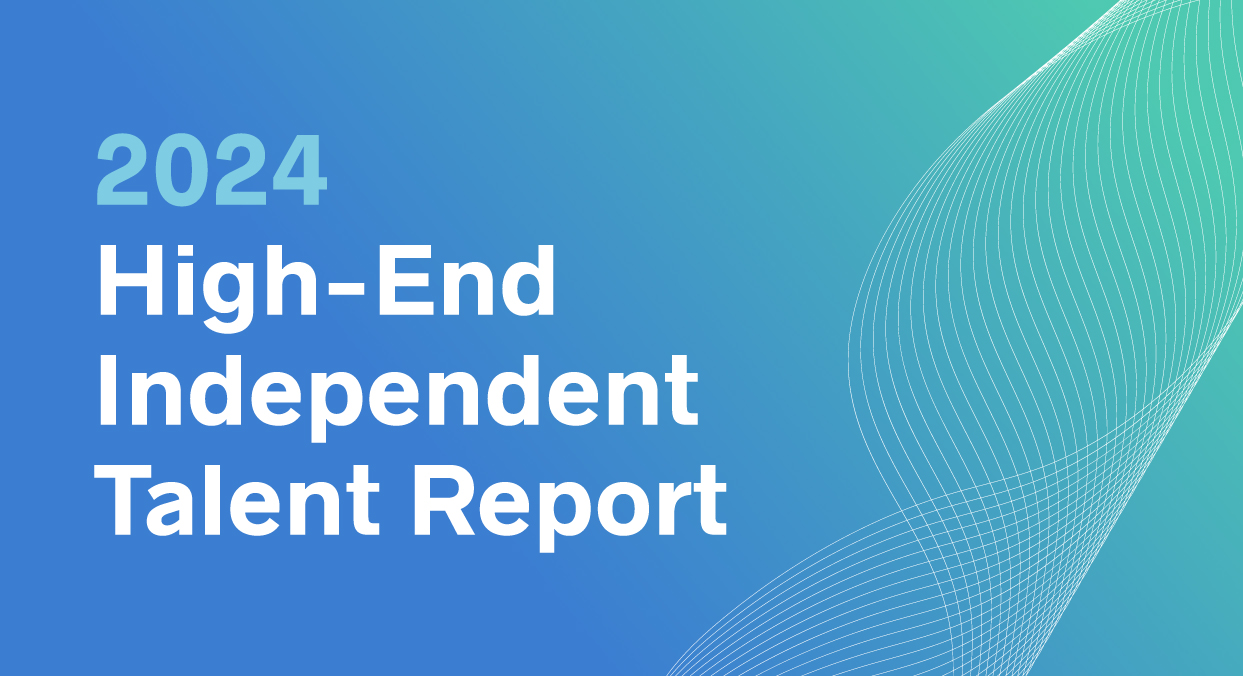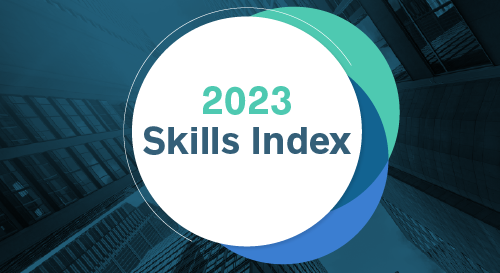
Experts agree that we’re experiencing unprecedented times in the global labor market, but the one thing no one seems to agree on is what exactly to call this moment. If you follow the latest workforce trends and news, chances are you’ve read articles, listened to podcasts, or had conversations in the past few months all peppered with the same word: “Great.”
While a few of the buzziest phrases include the Great Resignation, the Great Realization, and the Great Reshuffle, there are many more “Greats” where those came from. Each of these workforce trends center around the same notion, that the pandemic has caused major changes in the labor force at all levels across nearly every industry. Read on for a recap of today’s most superlative workforce trends and find out why there’s never been a better time to tap high-end independent talent for help with your greatest business opportunities and challenges.
Workforce Trend #1: The Great Resignation
The most widely discussed post-COVID workforce trend, The Great Resignation refers to the mass, voluntary exodus from the workforce—or at least the shift toward many considering leaving their current roles within the next several months. The COVID-19 pandemic forced companies to make changes for better or worse, such as the 180-degree flip from in-office to working remotely or reducing headcount to weather the uncertainty. In turn, those business decisions impacted the way of thinking for many in the workforce and gave people pause to reevaluate what they want out of work and out of life. “[Workers] want to work for companies they can be proud of, that are involved in their communities and that take a stand for things that they believe matter,” reads a recent article from Inc. “And they want a say—in decision making AND in their own scheduling.”
One factor fueling The Great Resignation is another “Great,” specifically The Great Talent Migration to remote work. As Tsedal Neeley, the Naylor Fitzhugh Professor of Business Administration at the Harvard Business School and author of Remote Work Revolution: Succeeding From Anywhere, puts it, “We have changed. Work has changed. The way we think about time and space has changed.” According to Neely, workers now crave the—previously unattainable—flexibility that companies had no choice but to give them during the pandemic.
Another survey from August 2021 sheds more light on workers’ reasoning regarding The Great Resignation. “The key reason employees cite for jumping ship: money. Among employees who plan to quit, 50 percent say their primary reason is better pay and benefits. Others want to explore new career opportunities, with 44 percent of workers interested in starting their own business; this number jumps to 70 percent for employees in the tech industry,” said an Inc. summary of the survey findings. “Remote work continues to be draw for many. About 43 percent of workers say they’re quitting to find jobs that don’t require being in an office. As more workplaces shift back to in-person, flexible work schedules and the option to stay remote may help businesses retain talent.”
Autonomy is key with the newly enlightened workforce. According to Microsoft’s 2021 Work Trend Index, 73% of employees want flexible remote work options to stay, and 46% of remote workers are planning to move to a new location this year because their work arrangements grant them the freedom to do so. Employees have had ample time to review and restructure their working lives how they see fit, but at the same time many have become burnt out by digital overload and the realities of remote work. One in five employees say their employer doesn’t care about their work-life balance, 54% say they feel overworked, and 39% say they’re downright exhausted. It’s no wonder then that many of them are ready to see if there is something better out there for them specifically. If the pandemic taught the workforce anything, it’s that work can and should be different, so now they’re looking for roles that meet their new expectations of what that means.
Data to Digest
- 48% of America’s working population is actively job searching or watching for opportunities (Gallup)
- The current quit rate is staggeringly high: nearly 4 million Americans resigned in July alone, for a quit rate comprising 2.7% of total employment—second only to the record-high rate of 2.8% found in April 2021 (US Bureau of Labor Statistics)
- Business leaders and their employees are experiencing the post-COVID environment very differently: 61% of business leaders say they are thriving right now, compared 64% of new employees and 61% of frontline workers who say they are struggling or merely surviving (Microsoft)
Workforce Trend #2: The Great Realization
Hand in hand with The Great Resignation, The Great Realization is a workforce trend in which “workers are re-examining the way they choose to pursue careers, find professional and personal fulfillment, and manage their income and lifestyles.”
This isn’t a completely new development. As tracked by MBO Partners’ State of Independence Report, the way workers think about and approach their work has been evolving over the past decade—with more and more choosing to become independent talent (for good reason). What makes this workforce trend pertinent right now is the surge in realizations turning into resignations across the workforce at large. More than ever before, great talent are opting to go independent because of the high levels of satisfaction associated with the change, the improved work-life balance that independent work offers, and new independents reporting that they feel happier, healthier, and more financially secure than they did as a part of the traditional workforce.
Independent work isn’t a lofty, out of reach concept anymore. After dipping slightly in 2020 in line with the broader labor market, the number of independent workers surged from 38.2 million to more than 51 million in 2021—an unprecedented 34% year-over-year increase. With 77% of independents saying they’re highly satisfied, and almost one-third of traditional jobholders now viewing independent work as less risky than having a traditional job, it’s no surprise that millions of workers are having an ah-ha moment.
Workforce Trend #3: The Great Attrition/Attraction
At this point, business leaders have no choice but to take what the workforce is saying and learn from it. Learn why employees are leaving. Learn what makes them consider leaving, no matter how big or small the inciting incident may seem. Once a company has taken the time to synthesize what they’re hearing and learning, it’s up to them to act, to instigate changes that will both attract and retain talent.
According to McKinsey, companies can transform The Great Attrition into The Great Attraction if they make a concerted effort to take meaningful action. “By seizing this unique moment, companies could gain an edge in the race to attract, develop, and retain the talent they need to create a thriving post pandemic organization.” But the authors caution, “By not understanding what their employees are running from, and what they might gravitate to, company leaders are putting their very businesses at risk.”
Companies must facilitate a workplace built on flexibility, connectivity, unity, recognition, and purpose at all levels of an organization, from executive leadership to interns and everyone in between. While McKinsey’s survey shows that 60% of employees are not likely to leave in the next 3-6 months, the firm cautions that employers shouldn’t view that stat as “safe” from attrition. “Options are increasing, and with more and more employers offering remote-work choices for hard-to-source talent, these employees could change their intentions.”
The only way to stem the attrition is to make the changes necessary to turn it into attraction. To do so, make sure key conversations around work arrangements, company values, and culture don’t occur in a vacuum. Include your employees in the restructuring and realization processes, because if you demonstrate that you’re listening to your people and making the changes they value, they’ll stick around.
Data to Digest
- 40% of employees stated that they are at least somewhat likely to leave their current job in the next 3-6 months—including 18% who said their intentions range from likely to almost certain (McKinsey Quarterly)
- 2/3 of those who said they’re likely to leave added that they would do so without having a new job lined up (McKinsey Quarterly)
- 53% of the employers said that they are experiencing greater voluntary turnover than they had in previous years, and 64% expect the problem to continue—or worsen—over the next six months (McKinsey Quarterly)
Workforce Trend #4: The Great Reshuffle
Partly in response to The Great Resignation, businesses are undergoing The Great Reshuffle to keep up with rapid changes in the workforce. Like their employees, employers are also coming to realize that how we work isn’t the only thing that matters, so too does the answer to why we work.
According to LinkedIn CEO Ryan Roslansky, companies are having to rethink what their company means, their entire set of values, and their working style as a company. All of this while maintaining a growth mindset, embracing flexibility, and defining the roles and skills they will need to rapidly act on unforeseen opportunities amid ongoing uncertainty.
Roslansky sees this as a positive development that will ultimately benefit organizations who engage their employees with empathy and trust—as well as the talent doing work they love at companies they feel passionate about.
Workforce Trend #5: The Great Wait
For both business leaders and the workforce at large, dealing with what to do next has proven tricky at best. At the same time Microsoft found that a large majority of employees want flexible remote work options to continue, its 2021 Work Trend Index also showed that 65% are craving more in-person time with their teams. With that in mind, 66% of business decision markers are considering redesigning their physical spaces to better accommodate hybrid work environments.
And yet, return-to-office plans have been postponed repeatedly by the global health crisis that’s still very much in flux—a post-COVID workforce trend that organizational consultant Kate Bullinger calls The Great Wait. The stakes are high, and companies are facing significant financial strain and difficulties making and communicating a decision. If a company announces a return-to-office date and it gets pushed back, it can change the strategies or policies that may be required for safety and monitoring.
Tracking vaccination status and securely storing that data aren’t free. Nor are COVID tests, PPE, and systems to keep unvaccinated and untested employees away from the workplace—such as automatic badge deactivation if unvaccinated employees haven’t provided negative test results in the past 24 hours. Without careful planning and execution, a messy return could impose additional non-monetary costs such as lack of trust, loss of productivity, and—the worst possible outcome—the risk of an office outbreak. Each step in a return-to-office plan opens the door for a number of difficult decisions.
Candid communication is sorely needed by everyone involved, but the last thing business leaders want to do is make an announcement only to have to retract it soon after. On the other hand, being tight-lipped can have negative effects on some workers as well, such as parents who must plan childcare and might have more concern around office reopenings and a physical return to work. According to Bullinger, business leaders should be as transparent as possible, even when decisions haven’t been made official yet—communicating the plans they have made while acknowledging the fluidity of the situation in a clear and consistent way. Doing so allows employees and employers the time they need to plan accordingly for whatever decision comes to fruition.
Data to Digest
- As of late August, 66% of organizations are delaying their office reopening due to COVID variants (Gartner)
- 45% of workers want to be in-office full-time, compared with 31% who want to be remote full-time and 24% who want a hybrid arrangement (The New York Times / Morning Consult)
- Only a third of employees would give their employers an ‘A’ for the way they’ve managed resuming in-person work (Eden Workplace)
A Great Time for Independent Talent
The inundation of competing takes on exactly which “Great” workforce trend we’re currently experiencing is a reminder that 18+ months into the COVID-19 pandemic, the future of the workplace is as uncertain as ever. Meanwhile, employers are spending a lot of money to figure out what to do next. As companies think about how to retain and attract talent in one of the tightest labor markets to date, high-end independent talent can be a gamechanger—providing a nearly limitless source of in-demand skills and expertise to fill resourcing gaps, develop strategies to seize unforeseen opportunities, and lead critical projects such as return-to-office initiatives.
Savvy business leaders are taking note of the vast pool of talent available in independent marketplaces like BTG, with nearly 50% of business leaders saying that they expect their use of new digital platforms to increase significantly in the future, and almost 90% of business leaders reporting that talent platforms will be somewhat or very important to their organization’s future competitive advantage. In addition to that, 40% of users reported that accessing highly skilled workers through new digital talent platforms helped improve speed to market, boost productivity, and increase innovation.
Each of the workforce trends above will play a role in shaping the next new normal for the workforce at large. As more and more skilled talent discover that independent arrangements suit their preferences for flexibility and fulfillment in their work, leading companies are also realizing how valuable flexible projects and consultants can be. With so much uncertainty and potential for change still, there’s no time like the present to take advantage of the booming independent market by posting critical projects with BTG. Find the talent you need today.
GET THE SKILLS YOU NEED
Thousands of independent consultants, subject matter experts, project managers, and interim executives are ready to help address your biggest business opportunities.


